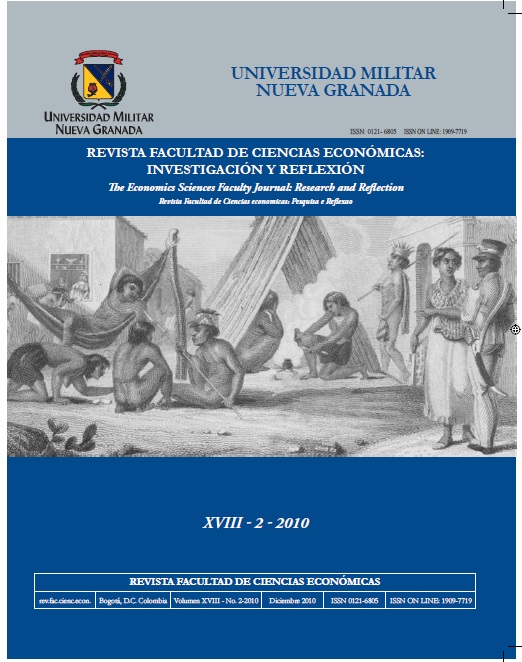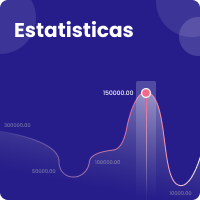Evasão de impostos nacionais na colômbia(2001-2009)
Resumo
This article presents an approximation of evasion; it seeks to define the concept of tax evasion taking as an economic approximation reference done until now. Initially, various concepts are exposed; then general causes and effects of evasion are included, also, the results of the applications of some measurement models worldwide are presented and, finally, the evasion in national taxes is estimated such as Income Tax and Added Value Tax (IVA) for Colombia between 2001-2009, such estimations are made with an econometric model and the methodology used consists in cointegration analysis, such modeling concluded that, evasion was reduced from 46.3% to 31.4% of the total collection of Income Tax and I.V.A. during the period established.
Downloads
Referências
Arango, C, Misas M, & López, E. (2005). Economía subterránea en Colombia 1976-2003: Una medición a partir de la demanda de efectivo.
Blakemore A, & Burgess P. (1996). Employer tax evasion in the unemployment insurance program. Journal of labor economics, 14: 210-230. http://dx.doi.org/10.1086/209809
Boadway R, & Keen M. (1997). Evasion and time consistency in the taxation of capital income. International Economic Review, 39: 461-476. http://dx.doi.org/10.2307/2527302
Cominetti, R. (1994). Ajuste fiscal y gasto social. En: Revista CEPAL, 54: 47-60.
Crane S, & Farrokh, N. (1986). Inflation and tax evasion: an empirical analysis. The Review Of Economics an Statistics, 68: 217-223. http://dx.doi.org/10.2307/1925500
Escobar R. (2006). La medición y control de la erosión de las bases tributarias: los gastos tributarios y la evasión tributaria. Centro Interamericano de Administraciones Tributarias. FALTA CIUDAD
Feinstein, J. (1991). An econometric analysis of income tax evasion and its detection. The Rand Journal Of Economics, 22: 14-35. http://dx.doi.org/10.2307/2601005
Folco, C. (2009). Ilicito Fiscal. Bogotá D.C., Colombia: Instituto Colombiano de Derecho Tributario.
Giorgetti, A. (1967). La evasión tributaria. Buenos Aires, Ediciones De Palma.
Klepper, S, Nagin, D. The anatomy of Tax Evasion. Oxford University Press. 5, 1-21. FALTA AÑO Y CIUDAD
Macías H, Agudelo L, & Lópéz, M. (2007). Los métodos para medir la evasión de impuestos: una revisión. Semestre económico. Universidad de Medellín, 20: 67-85.
Macías H, & Cortés J. (2004). Disminuir la tarifa general de IVA en Colombia aumentaría el recaudo tributario. Semestre económico. Universidad de Medellín, 13: 19-42.
Martínez, S. (1997). De la infracción tributaria y sus sanciones. Bogotá D.C: Instituto Colombiano de Derecho Tributario.
Misión del Ingreso Público (2002). Informe del consejo directivo
Persson M, & Wissen P. (1984). Redistributional Aspects of Tax Evasion. Blackwell Publishing on behalf of The Scandinavian Journal of Economics, 86: 131-149. http://dx.doi.org/10.2307/3439686
Rojas, J. (2004). Evasión: ¿cómo medirla? En: Revista impuestos, Legis, 121: 4-9.
Slemrod, J. (1985). An empirical test for tax evasion. The review of economics and statics, 67: 232-238. http://dx.doi.org/10.2307/1924722
Tanzi, V. (1968). International Tax. The Journal of Political Economy, 67: 1078-1084. http://dx.doi.org/10.1086/259470
Toro, J. (1993). Estimación de la evasión en el IVA en Chile, Serie Política Fiscal, 64, 5-64. FALTA CIUDAD, EDITORIAL
Unidad de Derecho Tributario y Contable (2004). Alternativas en la medición de la evasión. En: Revista Impuestos, Legis,121: 2.
Valencia, O. (2004). Economic Growth and the household optimal income tax evasion. Departamento Nacional de Planeación. Dirección de Estudios Económicos.











